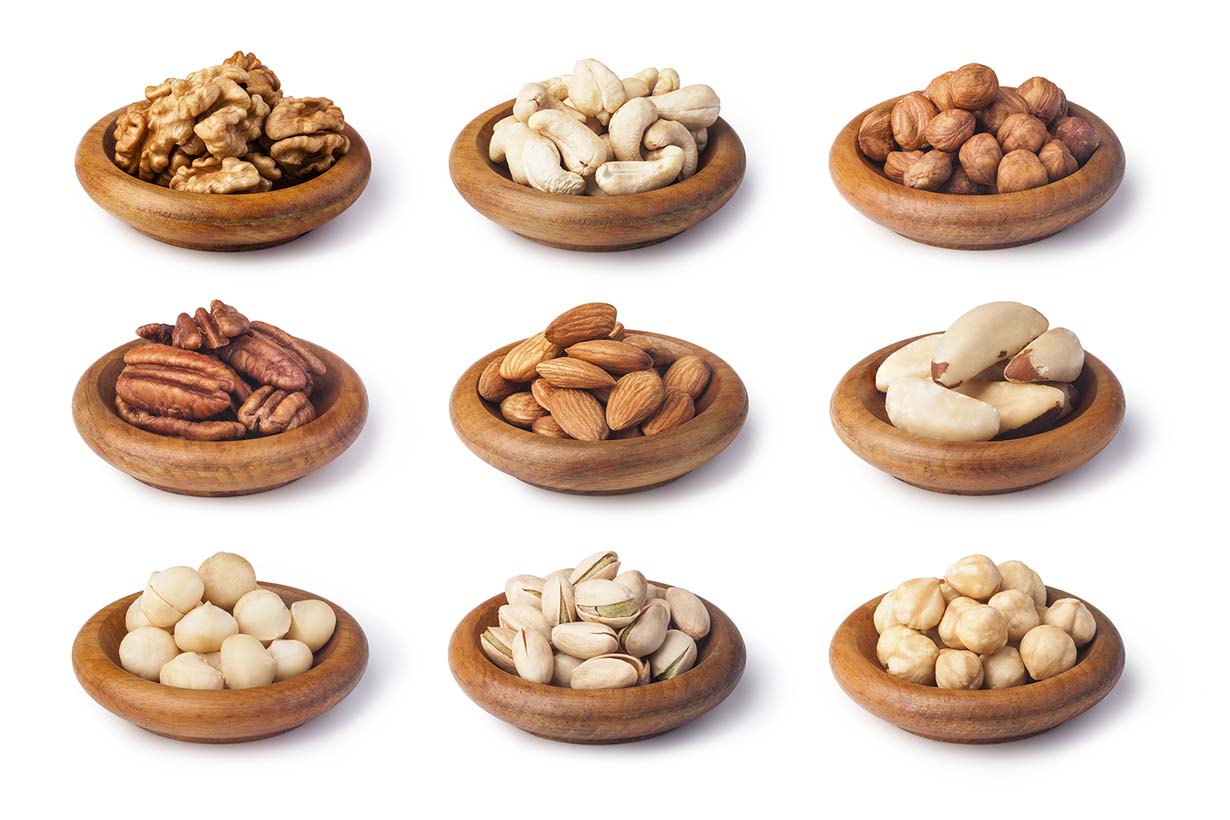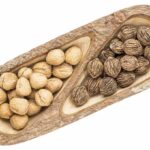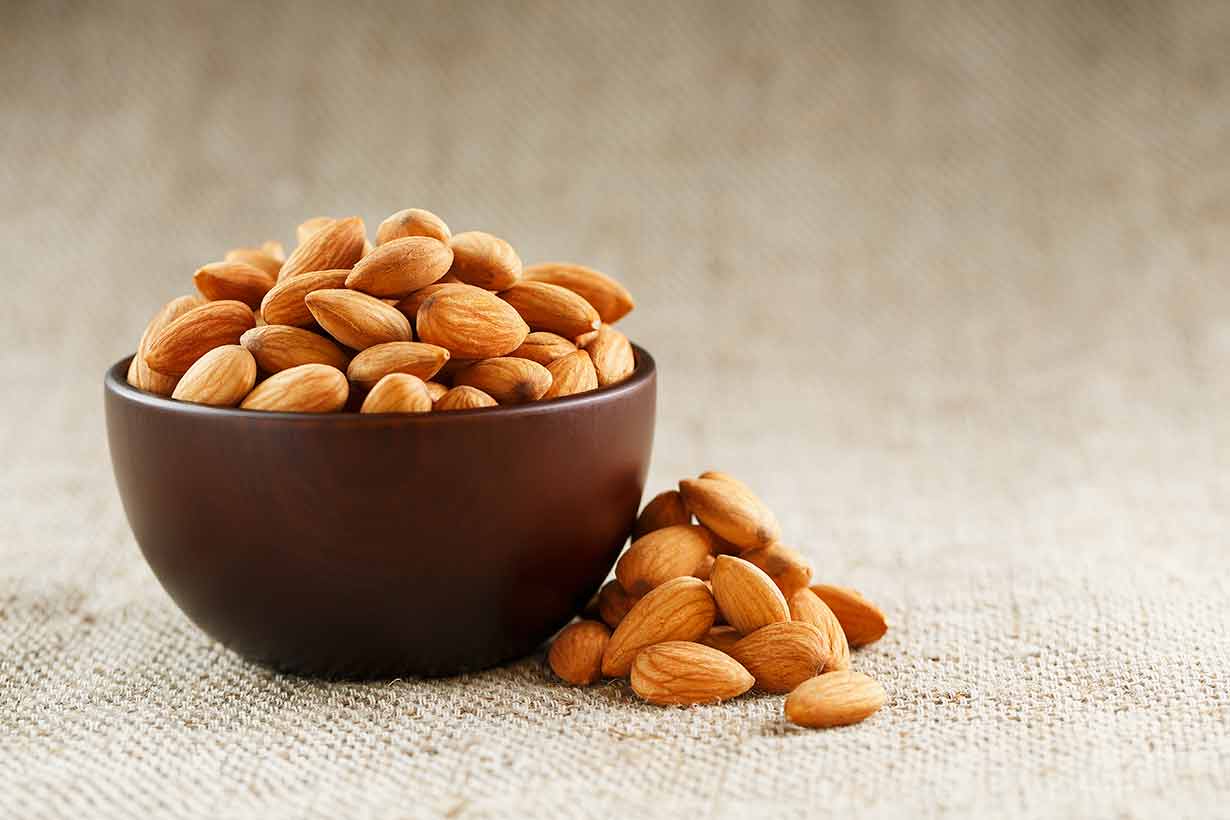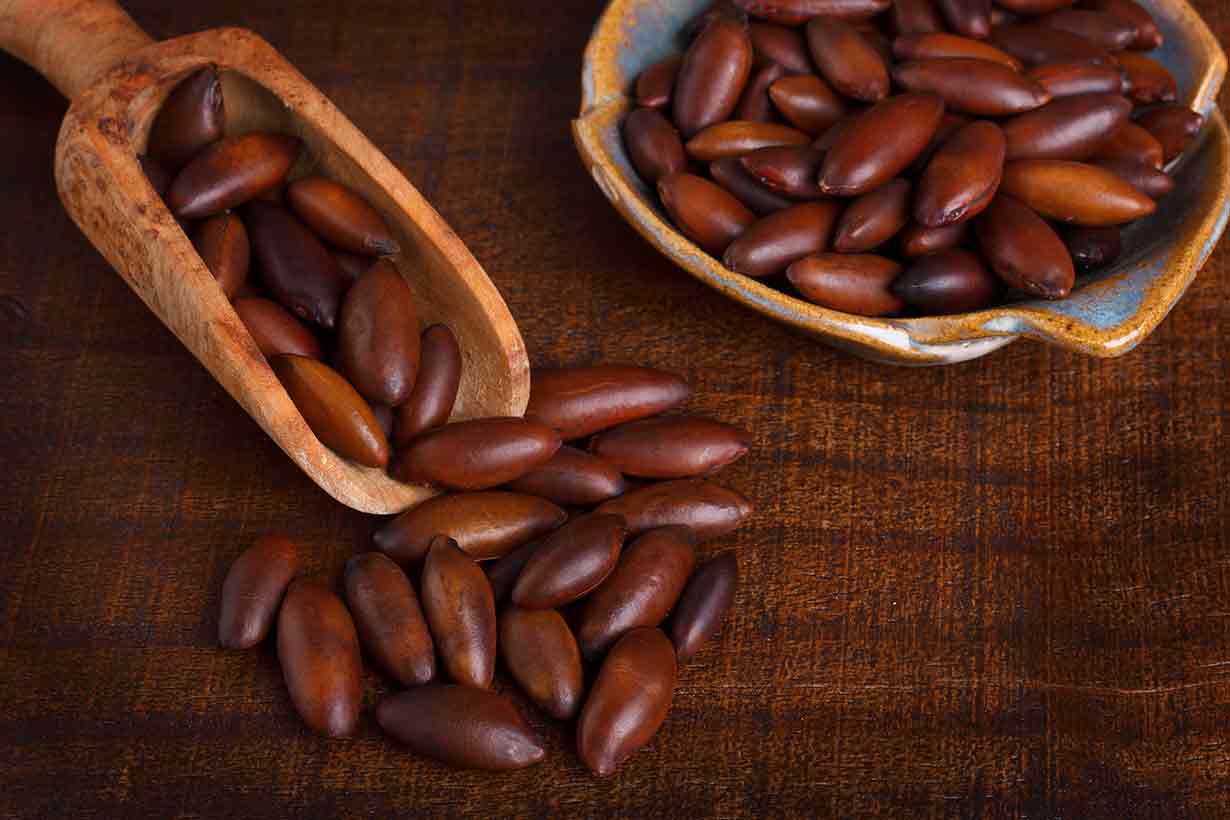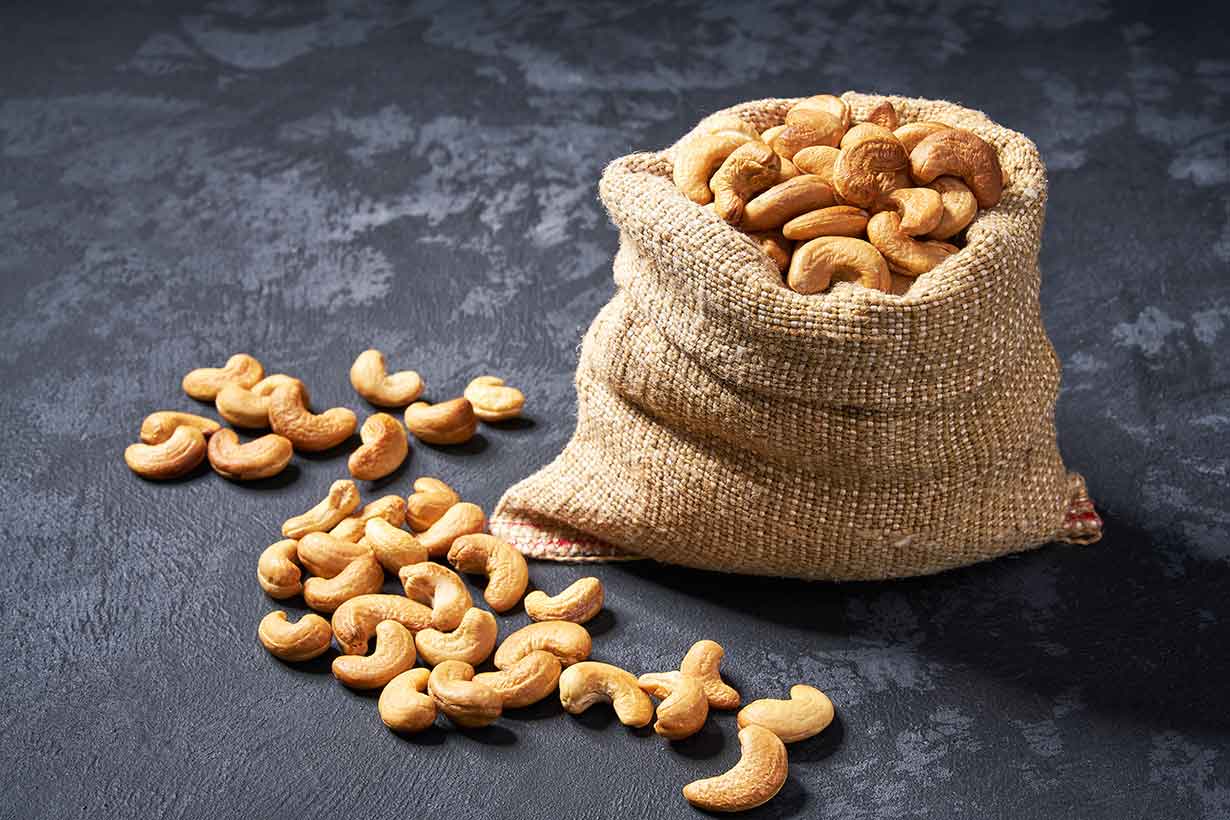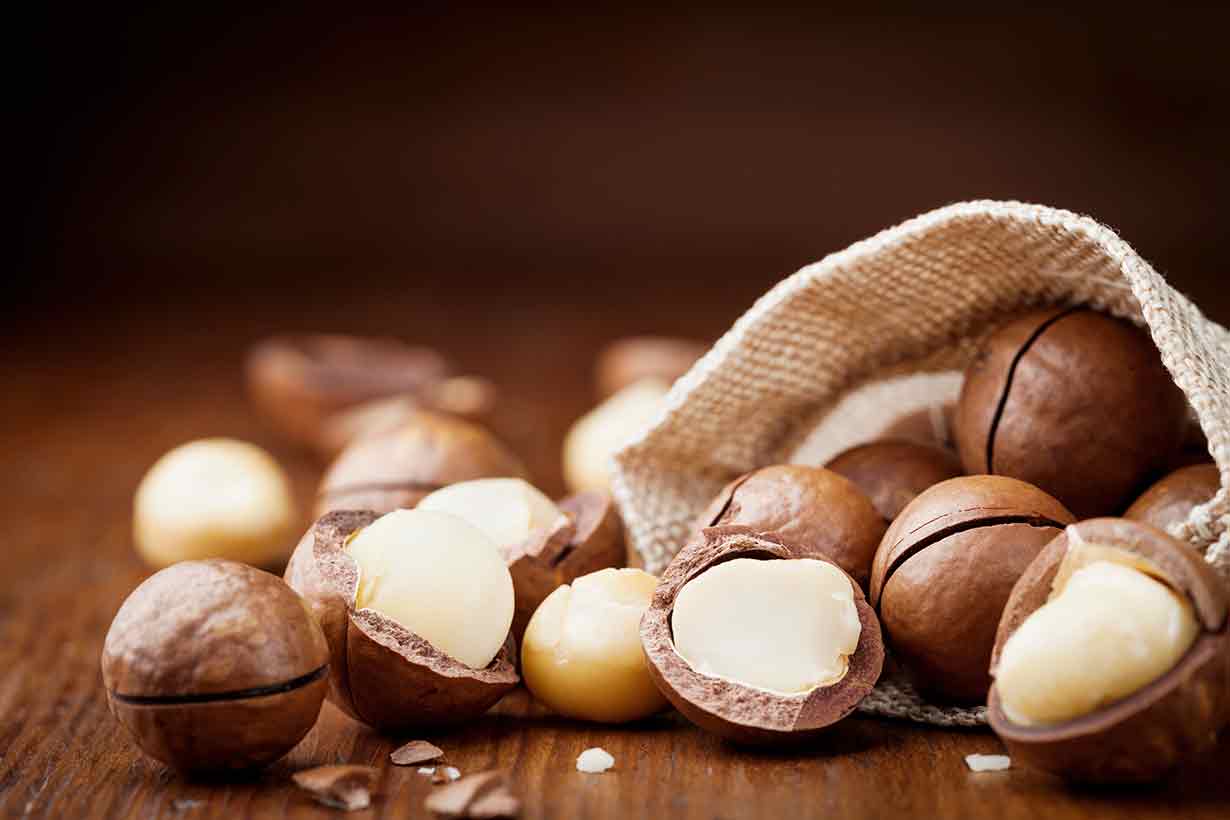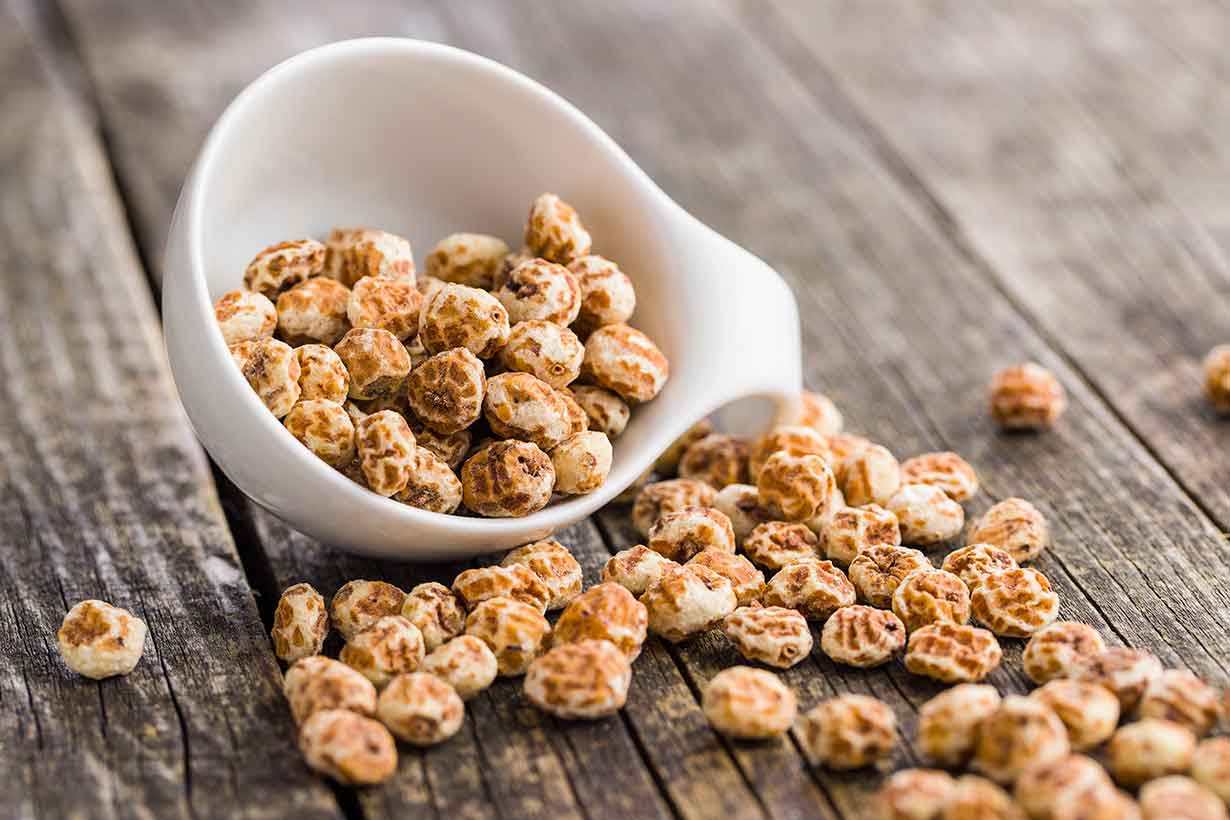Sacha inchi nuts grow in unique star-shaped pods, and they have become increasingly popular in recent years.
Although exaggerated “superfood” marketing claims often surround them, sacha inchi nuts do provide a valuable range of nutrients.
This article takes a look at the nutritional values of sacha inchi and how they compare to other common nuts.
What are sacha inchi nuts?
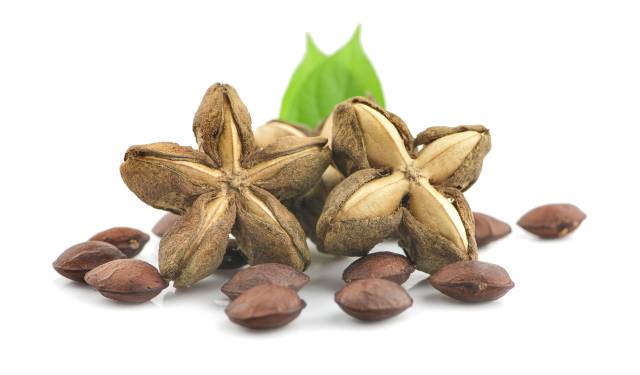
Firstly, sacha inchi “nuts” are technically seeds. However, this botanical classification is not a unique thing.
Many other foods that we call “nuts” are also seeds, and this group includes almonds, cashews, and walnuts. Despite being a seed, people consume sacha inchi like a nut, and it is sold as such.
The plant that produces sacha inchi seeds/nuts is called Plukenetia Volubilis, and it primarily grows in the Amazon rainforest and South-East Asia. Peru is responsible for a significant proportion of global production (1).
Sacha inchi nuts are also known as “Inca peanuts,” and they share a slightly similar taste to regular peanuts, but they have a distinct tasty flavor.
The nuts have a light green color when fresh, but they become brown after roasting, and they have a crunchy texture.
Sacha inchi nuts have high oil and protein content (2).
Nutrition facts
The following table shows the basic nutritional values of sacha inchi nuts per ounce (28g) serving.
Currently, the major nutritional databases (such as the USDA and NCC) do not contain accurate values.
Therefore, the median nutritional values have been calculated using published research papers that analyzed the nutritional composition of sacha inchi (3, 4, 5, 6, 7, 8).
| Calories/Nutrients | Amount |
|---|---|
| Calories | 166 kcal |
| Carbohydrates | 6.3 g |
| Fiber | 4.5 g |
| Fat | 12.4 g |
| Saturated | 1.1 g |
| Monounsaturated | 1.3 g |
| Polyunsaturated | 10.0 g |
| Omega-3 | 5.8 g |
| Omega-6 | 4.2 g |
| Protein | 7.3 g |
Sacha inchi nuts contain carbohydrate, fat, and protein.
The majority of the fat content is polyunsaturated fat, and the carbohydrate is mainly fiber.
A good source of protein
As shown in the nutritional values, sacha inchi nuts provide approximately 7.3 grams of protein per ounce serving.
Per 100 grams, this equates to 26 grams of protein, which is far higher than most other nuts or seeds.
Additionally, sacha inchi nuts are one of the best plant-based sources of protein, and they contain a good range of essential (and non-essential) amino acids.
On this note, a randomized human trial studied how sacha inchi protein compared to soy protein for true protein digestibility.
First, this research provided the ratio of amino acids in sacha inchi protein (9):
- Tryptophan: 2.25%
- Cystin: 1.35%
- Methionine: 0.68%
- Alanine: 2.04%
- Arginine: 6.13%
- Aspartic acid: 6.83%
- Glutamic acid: 7.71%
- Glycine: 6.31%
- Histidine: 1.17%
- Isoleucine: 2.73%
- Leucine: 4.03%
- Phenylalanine: 1.42%
- Proline: 2.29%
- Serine: 3.48%
- Threonine: 2.65%
- Lysine: 2.95%
- Tyrosine: 2.87%
- Valine: 3.46%
Furthermore, the study demonstrated that sacha inchi protein and soy protein intake had similar effects on nitrogen balance. In other words, this infers that the true protein digestibility (bioavailability) of sacha inchi and soy appears to be similar (10).
Sacha inchi nuts are a rich source of minerals
Sacha inchi nuts provide a broad range of minerals in high amounts.
Per ounce (28-gram) serving, the nuts offer (3):
- Copper: 41% DV
- Magnesium: 22% DV
- Calcium: 5% DV
- Iron: 16% DV
- Zinc: 13% DV
- Potassium: 3% DV
Fiber content
Growing evidence shows that carbohydrate quality is important for health, and fiber-rich whole food sources of carbohydrate are superior to refined carbohydrates (11).
On this note, a recent systematic review of randomized controlled trials and prospective studies suggested that greater fiber intake confers benefits in a dose-response manner. One of the primary beneficial effects seen in the observational studies was a statistically significant lower incidence of non-communicable diseases such as type 2 diabetes and cardiovascular disease (12).
It is also thought that fiber may hold benefits for gastrointestinal health through its ability to act as a prebiotic. In this regard, fibers can be fermented by gastrointestinal microbiota to produce metabolites such as short-chain fatty acids, which can have a variety of benefits (13, 14).
Fiber represents approximately 75% of the carbohydrate in sacha inchi nuts.
For more high-fiber nut options, baru nuts may be worth looking into.
Sacha inchi may reduce blood pressure and lower LDL
Several published studies suggest that sacha inchi nuts may have a beneficial impact on markers of cardiovascular risk.
Firstly, a randomized, double-blind placebo-controlled trial found that sacha inchi oil intake reduced levels of LDL cholesterol and increased HDL cholesterol.
In the study, 34 participants consumed either 10-15 ml of sacha inchi oil or sunflower oil each day for four months. The sacha inchi oil group experienced significant increases in HDL and declines in LDL over the intervention period. The participants also experienced reductions in arterial blood pressure (15).
Further human trials have also demonstrated these same results (16, 17).
Sacha inchi nuts are a rich source of omega-3
Another benefit of sacha inchi nuts is their high omega-3 content. Per ounce (28-gram) serving, they offer approximately 5.8 grams of omega-3.
This amount is more than any other nut, and it’s a greater amount than what most seeds provide too.
The omega-3 content is in the form of alpha-linolenic acid, also known as ALA (3).
ALA is not as bioavailable to the human body as preformed omega-3 (DHA and EPA) found in seafood. The reason for this is because ALA requires conversion to DHA and EPA before the body can utilize it (18).
A variety of research has demonstrated that the conversion rate of ALA to DHA/EPA can vary from individual to individual, but the rates are generally low and below 15% (19, 20, 21).
However, assuming only 10% bioavailability, 5.8 grams of omega-3 becomes 580 mg, which is still a beneficial amount of omega-3 per ounce serving.
A greater intake of omega-3 fatty acids has several research-backed benefits, such as lowering triglyceride levels (22, 23, 24).
A recent meta-analysis of 13 randomized controlled trials published in the Journal of the American Heart Association also found that higher omega-3 intake (from marine sources) reduced the risk of cardiovascular events. This risk reduction was linear with increased doses resulting in more significant risk reductions (25).
Are there any potential side effects?
Raw sacha inchi nuts contain alkaloids, saponins, and lectins in large enough proportions to potentially cause toxicity (26).
For this reason, sacha inchi nuts are always roasted before being sold, so these compounds should not be an issue.
Although all foods are capable of causing an allergic reaction, there does not appear to be a high risk of allergy to sacha inchi.
There is one case study of bronchial asthma induced by exposure to the nuts, but there is little else in the way of allergy reports (27).
How To Use Sacha Inchi
Similar to other nuts, sacha inchi is quite versatile, and it is possible to use them in several ways.
The nuts can be eaten alone or used in a wide range of different recipes. They also make an excellent addition to yogurts, salads, and cheese platters.
Final Thoughts
Sacha inchi nuts have a unique and attractive appearance, they taste good, and they are relatively nutritious too.
The nuts are an especially good source of protein, omega-3, fiber, and copper.
On the downside, as a newly popular food, their health benefits are often exaggerated by the companies that sell them. Perhaps due to this reason, sacha inchi can be challenging to find for a reasonable price.
However, if they’re available for an affordable price, these tasty nuts are worth a try.

